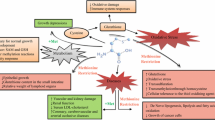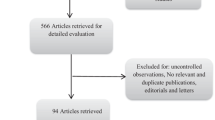Abstract.
The coffee components kahweol and cafestol (K/C) were reported to be protective against mutagenic damage by heterocylic amines and aflatoxin B1 in the rat, while in humans the consumption of coffee with a high K/C content was associated with a lower rate of colon tumors. An important mechanism of this antimutagenic effect appears to be the potential of K/C to induce glutathione-S-transferase (GST) and to enhance hepatic levels of glutathione (GSH), the co-factor of GST, which is independently involved in further protective mechanisms. In the present study, we investigated mechanisms and organ specificities (liver, kidney, lung, colon) of the K/C effect on GSH levels, and particularly the role of γ-glutamylcysteine synthetase (GCS), the rate limiting enzyme of GSH synthesis. Chows containing one of four concentrations of either a 1:1 mixture of K/C (0.012–0.122%) or of cafestol alone (0.006–0.061%) were fed to male F344 rats for 10 days. In the K/C-treated livers, a dose-dependent increase of up to 2.4-fold in the activity of GCS was observed, being statistically significant even at the lowest dose, and associated with an increase in GSH of up to three-fold. Notably, the highest dose doubled the hepatic mRNAs of the heavy and light subunits of GCS, suggesting enhanced transcription. In the extrahepatic organs, GCS activity and GSH levels were increased as well, although more moderately than in the liver. Since enhancement of GCS had also been observed as a consequence of oxidative stress, the possibility of such an involvement in the actions of K/C was examined by determining hepatic thiobarbituric acid reactive substances and the ratio of oxidized and reduced GSH. However, no evidence of oxidative stress was detected. In summary, K/C increased GSH levels apparently through the induction of the rate limiting enzyme of GSH synthesis, which may be a key factor in the chemopreventive potential of coffee components.
Similar content being viewed by others
Author information
Authors and Affiliations
Additional information
Electronic Publication
Rights and permissions
About this article
Cite this article
Huber, W.W., Scharf, G., Rossmanith, W. et al. The coffee components kahweol and cafestol induce γ-glutamylcysteine synthetase, the rate limiting enzyme of chemoprotective glutathione synthesis, in several organs of the rat. Arch Toxicol 75, 685–694 (2002). https://doi.org/10.1007/s00204-001-0295-5
Received:
Accepted:
Published:
Issue Date:
DOI: https://doi.org/10.1007/s00204-001-0295-5




